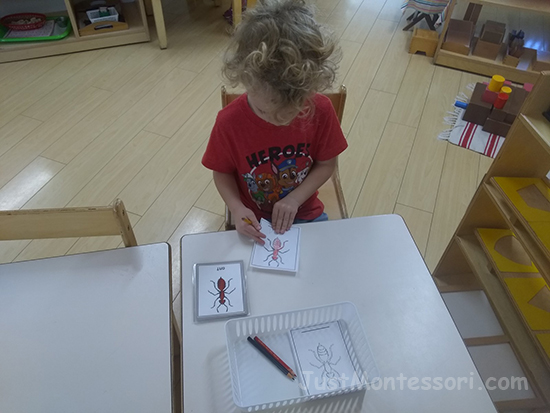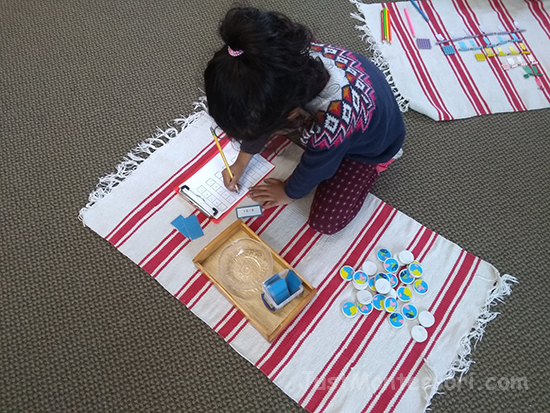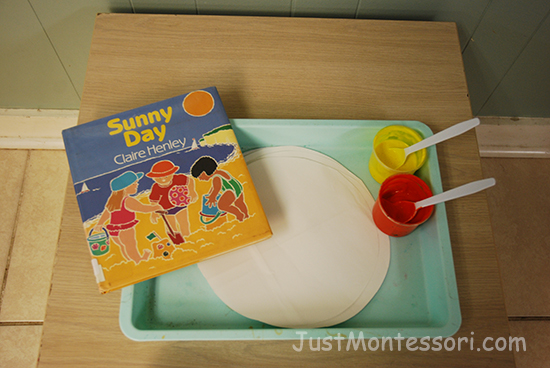

We read about the sun and looked at parts of the sun last week in our Science 68 second circle. Here’s what we discussed…
The weather is getting warmer outside. What shines down on the Earth to warm us up? The Sun. The sun is a middle-sized yellow star. It is a star just like the ones we see in night sky, but it is the only star we see during the daytime. The Sun is so big that you could fit more than 1 million Earths in it! it is a huge ball of hot glowing gases. How hot?
The temperature is about 10,000 degrees on the surface and more than 28 million degrees at the core! The Sun is the closest star to the Earth. The Sun’s energy drives the weather and climate on the Earth, and supports all life that is on it. We have learned how plants need the sun to help them make its food. remember what that is called, photosynthesis.
The Sun’s surface, or atmosphere, is divided into three regions: the photosphere, the chromosphere, and the solar corona. There is something called Thermonuclear Fusion. This is the process in which a star produces its light, heat, and energy. This happens at the core of the star. The core is superheated to millions of degrees. This heat travels towards the surface and radiates out into the universe. We can feel the warmth of the Sun’s heat here on the Earth, especially now as Spring is here.

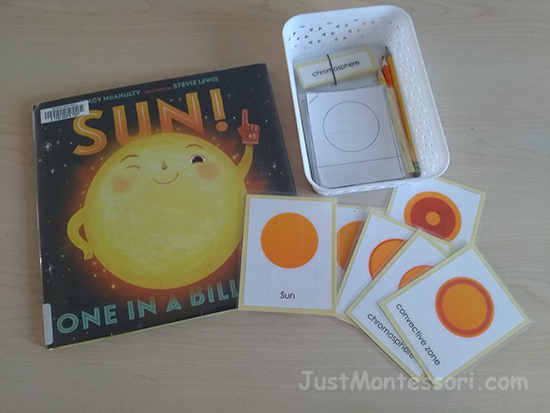
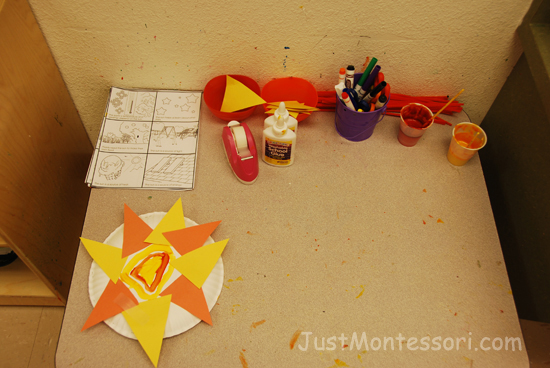
And, of course, while some children are taking advantage of the works from our Second Circle, others are engaging in activities from around the classroom.
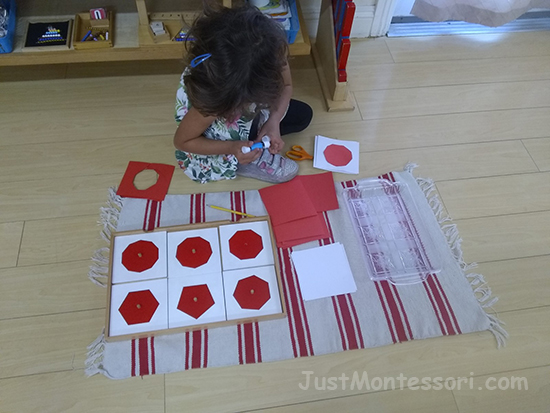
Through repeated interaction with the Geometric Cabinet, children develop a strong foundation in geometry, spatial awareness, and fine motor skills. They also cultivate an appreciation for shapes and their characteristics, which can later be applied to other mathematical concepts.
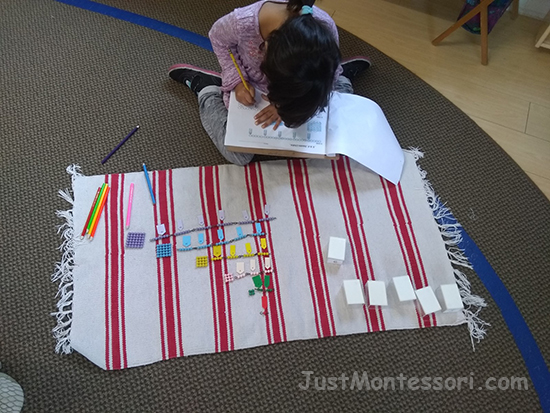
Bead chains provide a concrete and tangible representation of numbers and counting, allowing children to develop a strong number sense and mathematical foundation. They also support the development of fine motor skills as children manipulate the beads and string them together.
